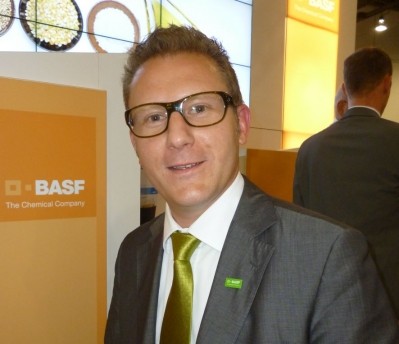BASF targets entire supply chain sustainability with SET initiative

“We all have an enormous responsibility as we strive to feed 9 billion people on this planet by 2050,” BASF’s Samy Jandali told NutraIngredients-USA at the recent SupplySide West show in Las Vegas.
“Feeding that many people more affordably with quality food and fewer environmental resources in less than four decades will prove to be a major challenge unless we find ways to produce more sustainable food, and this needs to happen right away,” he said.
The issue
Sustainability is a key driver for today’s industry. Indeed, Justin King, chief executive of UK retail giant Sainsbury’s, recently said that sustainability will continue to rise higher up the agenda over the coming years.
“Being a sustainable company is not about box ticking, it’s about future-proofing your business and building trust and brand loyalty that will last for years to come,” added Mr King.
The industry has already begun to face up to the challenges ahead, and according to a 2009 report by the Aberdeen Group, sustainability programs for the wider food industry have already led to a 19% reduction in energy costs and a 5% decrease in overall operational costs year-over-year.
Despite such progress, more needs to be done, said Jandali, and he pointed to the company’s “unique” sustainability S.E.T. (sustainability, eco-efficiency, and traceability) program as a way to make sustainability “doable”.
“We know that many companies struggle with how to integrate sustainability programs in a meaningful way,” he said. “BASF’s S.E.T. initiative makes it doable with tangible results.”
S.E.T.
“BASF's program is unique because we consider environmental, social and economic parameters - including a life cycle assessment on costs,” explained Jandali.
“From this complete analysis, companies can learn how to use fewer environmental resources and improve social diligence, all while keeping their products affordable.”
The company has already applied its program to more than 450 products, process, or methods of production, in order to help brand owners and retailers evaluate the entire value chain, he said.
“In effect, we take a snapshot of challenges and opportunities along the entire value chain so our customers can rank priorities.”
Case study
As an example, Jandali pointed to a beverage and its value chain: “The major impact categories are ingredients, pre-mix, manufacturing and retail. Each of these uses water, energy, and packaging. What is the impact of the different value chain categories on each resource? And, how relevant are the impact categories for the good of the consumer?
“The BASF team conducts life-cycle analyses to identify where and how to reduce hot spots in the value chain. If 50% of the impact is in the ingredients area and 40% is in manufacturing for a particular category, the team can now pinpoint its efforts and identify specific sustainability metrics in that area to maximize results.”
Third part certification
The company notes that its eco-efficiency analysis is certified by TÜV, the Technical Standards Organization, while the traceability platform includes the Global Traceability Network, an internet-based platform from Tracetracker.
S.E.T. also meets the product sustainability requirements of DNV’s ProSustain standard, said the company.









